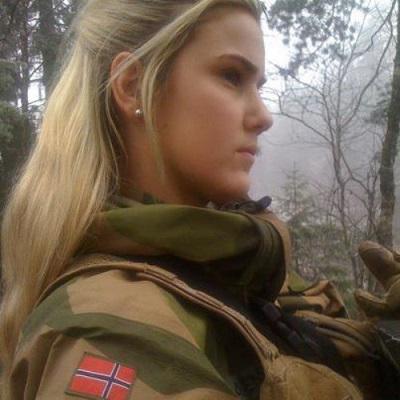End of the Viking Age
The basic misconception that Viking warriors wore horned helmets was partly promulgated by the nineteenth-century enthusiasts of Götiska Förbundet, based in 1811 in Stockholm. They promoted using Norse mythology as the topic of high artwork and different ethnological and ethical aims.
Smoked salmon exists traditionally in many varieties, and is usually served with scrambled eggs, dill, sandwiches and mustard sauce. Another conventional salmon product is gravlaks, (actually “buried salmon”). Traditionally, gravlaks could be cured for 24 hours in a mixture of sugar and salt and herbs (dill). Since grav means “buried” it’s a frequent misunderstanding that the salmon is buried within the ground, (just like how rakfisk remains to be ready). This was the case within the medieval ages because the fermenting process was necessary, however, this isn’t the case today.
By 1900 the inhabitants had reached 7,500 folks of Norwegian ancestry. Many Norwegian settlers arrived and lived in varied other areas in the United States before completely settling in Minnesota. The first Norwegian emigrants to come most beautiful norwegian women to the United States often settled in the eastern Mid-west. The first Norwegian settlement in Minnesota was Norwegian Ridge, in what’s now Spring Grove, Minnesota.

The phrase “viking” was first popularised at the beginning of the 19th century by Erik Gustaf Geijer in his poem, The Viking. Geijer’s poem did much to propagate the brand new romanticised perfect of the Viking, which had little basis in historical reality. The renewed curiosity of Romanticism within the Old North had modern political implications. The Geatish Society, of which Geijer was a member, popularised this myth to a great extent.
In Old English, and in the historical past of the archbishops of Hamburg-Bremen written by Adam of Bremen in about 1070, the term generally referred to Scandinavian pirates or raiders. As in the Old Norse usages, the term isn’t employed as a reputation for any folks or culture in general. Norse civilisation during the Viking Age was technologically, militarily and culturally advanced. A romanticised picture of Vikings as noble savages began to emerge within the 18th century; this developed and became extensively propagated through the nineteenth-century Viking revival. Perceived views of the Vikings as alternatively violent, piratical heathens or as intrepid adventurers owe a lot to conflicting sorts of the trendy Viking fable that had taken shape by the early twentieth century.
The Minnesota Vikings of the National Football League are so-named owing to the large Scandinavian inhabitants in the US state of Minnesota. Early modern publications, coping with what is now referred to as Viking tradition, appeared in the 16th century, e.g. Historia de gentibus septentrionalibus (History of the northern people) of Olaus Magnus , and the primary edition of the thirteenth-century Gesta Danorum (Deeds of the Danes), by Saxo Grammaticus, in 1514. The pace of publication increased in the course of the 17th century with Latin translations of the Edda (notably Peder Resen’s Edda Islandorum of 1665).
This meals culture dates again to Vikings who feasted on beef, mutton and reindeer after they weren’t pillaging for extra unique fare. Today, foragers gather edible delights like berries alongside the rugged coast whereas farmers bring nice cheeses to market. Among Norwegians in Minnesota, fifty four,411 had been younger than the age of 5 (or 6.9% of all those with Norwegian ancestry); of the entire Minnesotan population, 327,988 have been youthful than the age of 5 (or 6.6% of all Minnesotans).
Explore the Programs Available in Norway
By the middle of the 1880s, Norwegian migration to Minnesota began to shift to the cities. There was a big influx of Norwegian immigrants into the city of Minneapolis from the Eighteen Eighties to early twentieth century, together with a less substantial migration to St. Paul. Its location on Lake Superior supplied Norwegian fishermen with ample employment. As a outcome, the Norwegian population of Duluth elevated dramatically between 1870 and 1900.
The Normans had been descendants of those Vikings who had been given feudal overlordship of areas in northern France, specifically the Duchy of Normandy, within the 10th century. In that respect, descendants of the Vikings continued to have an influence in northern Europe. Likewise, King Harold Godwinson, the final Anglo-Saxon king of England, had Danish ancestors. Two Vikings even ascended to the throne of England, with Sweyn Forkbeard claiming the English throne in 1013 till 1014 and his son Cnut the Great being king of England between 1016 and 1035.

Research-primarily based cookbook for cavemen and Vikings
During the Viking Age the Norse homelands have been gradually consolidated into three larger kingdoms, Denmark, Norway and Sweden. The Normans, descendants of Vikings who turned rulers of Normandy which was named after them, also fashioned the aristocracy of England from the Norman conquest of England. In fashionable English and other vernaculars, the time period additionally commonly contains the inhabitants of Norse residence communities throughout this era.
There was a Norwegian presence in New Amsterdam (New York after 1664) in the early a part of the 17th century. Hans Hansen Bergen, a native of Bergen, Norway, was one of many earliest settlers of the Dutch colony of New Amsterdam having immigrated in 1633.
